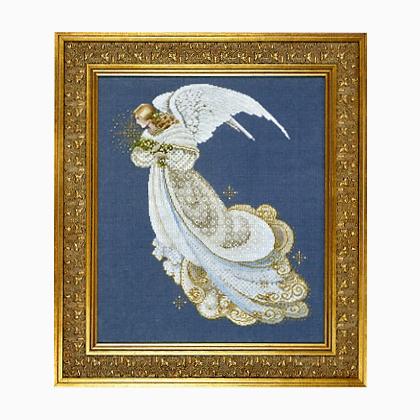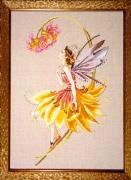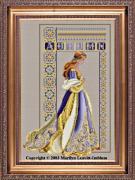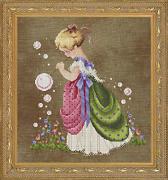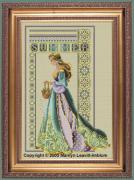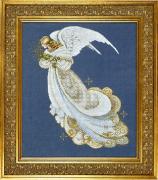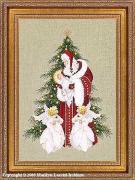Threads and conversions
Hello everybody!
It often happens to receive from you a lot of e-mails as for the thread conversions.
Since there is a real
jungle of different threads, it is actually very difficult to choose the threads to embroider as you can see in the wide section of
our catalog.
Let's start with a basic statement: the most commonly used threads are the moulinés. When I started embroidering the choice was limited to the sole DMC moulinés and the Anchor threads which are, I personally think, the same as for their quality. The time passing by, some other threads were introduced: Madeira moulinés, Venus and Portfolio which present a good price/quality ratio,
I must admitt that I found Venus threads particularly good when embroiderying a difficult chart like the
Angel of Dreams by Lavender & Lace and I was surprised by their quality!
However, if we talk about moulinés, the conversion is often easy since the producers, most of the times, create some conversion tables themselves. It is also true that we have to be aware of the fact that the same shade can vary a lot from one brand to the other and, consequentially, a rule is fundamental: if you start an embroidery with a specific brand you should always use that same brand throughout the whole work. This is not for pedantry but just because chemical color baths in which threads are dyed are not so precise and the same color can thus vary even when we buy two skeins of the same color and of the same brand! In fact, our mothers and grand-mothers, who belong to the crochet and tricot generation, were used to ascertain in the haberdasher's if the wool or cotton skeins belonged or not to the same bath (as reported in a code on the skein label).
All this changes a lot if we want to convert some hand-dyed threads and so naturally nuanced like normal moulinés since hand-dying is not precise like chemical color baths and, by contrast, is aimed at obtaining unusual shades which can move the embroidery and make it more plastic. And it changes quite dramatically, we could say, if we want to convert silk threads with cotton ones: which means threads produced with fibers which are as different as day and night.
Of course there are some conversion tables which are created by skillfull embroiderers who have been so patient to compare the different shade cards, but we cannot trust them completely.
For such a reason I send here a SOS: whenever possible (if our family resources make this affordable since silk and hand-dyed threads are a bit more expensive than moulinés), ALWAYS use the threads suggested by the designers of the chart in order to obtain the embroider as we expect it to be, i.e. similar to the original version!
By contrast, if it is necessary to change the threads, send us an
e-mail and we will glad to help you!
A big hug and... Happy Stitching!

 English
English Français
Français Español
Español Italiano
Italiano
